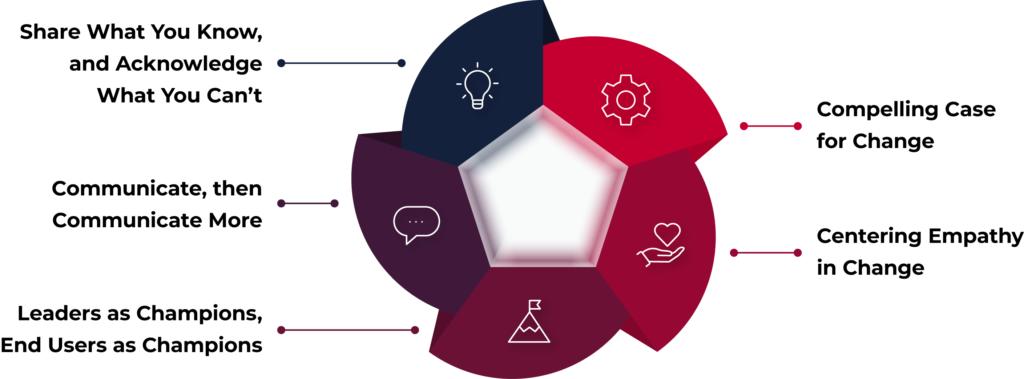No two workplaces are the same, with one exception: people are at the center of every single one. Because of that, no two workplace transformation strategies can be identical. In the first post in our series on The Clearing’s unique approach to workplace transformation, Nick Srebrow covered how we define workplace change management. For part two, Nick discusses the conditions required for successful workplace transformation.
The Clearing’s Time-Tested Keys to Workplace Change

After supporting over a decade of leading organizations through workplace transformations of all types, we have collected empirical data that has allowed us to hone our people-first approach to facilitating change. That data has also provided the opportunity to evaluate the conditions required for successful workplace transformation. In other words, we believe the following aspects must be present at the start of any change effort for a change effort to be successful.
Let’s take a look and discuss why each one is critical for success.
Share What You Know, Acknowledge What You Can’t.
Employees are eager for information about an upcoming move. In the absence of concrete details, people often resort to speculating about what might be happening instead of what is actually happening. This speculative chatter can quickly spread, regardless of whether it’s positive or negative news. However, it’s essential to share accurate information with your staff, even when it may not be ‘good news.’ Consistently providing timely and precise updates helps build trust and credibility among your employees.
Compelling Case for Change.
The cornerstone of any change management project lies in the ability to clearly articulate both the ‘what’ and the ‘why’ of the change. This forms the bedrock upon which the entire change process is built and should be consistently referenced. A robust and effectively communicated case for change serves a dual purpose: first, it enlists and motivates the “change champions” who play a pivotal role in the success of the project, and second, it acts as a guiding North Star, ensuring that these change champions remain focused on the overarching goal throughout the entire change journey.
Centering Empathy in Change.
Starting with empathy is the first step in effectively directing any change efforts. Understanding how individuals make decisions is crucial in guiding them through the change process. While people will eventually adapt to the changes, it’s essential to offer initial support and comfort during the early stages of transition.
Leaders as Champions, End Users as Champions.
Leaders go first. They must lead the way, setting an example not by choice, but by the very nature of their position. The real decision lies in the type of example a leader decides to set for their organization. Additionally, actively involving staff in the change process not only lends credibility to the project but also recognizes that end users have substantial influence within the system. This approach shifts the narrative away from what ‘they’ did to us and reinforces the idea that it’s about what we are collectively achieving as part of the change effort.
Communicate, then Communicate More.
People crave knowledge, and in its absence, they tend to create their own narratives. Sharing information, even when it’s not positive, is far more preferable to keeping people in the dark. Whether you share updates in a weekly all-staff meeting, or on your organization intranet page – communication is key to a successful effort.
Now that we understand the conditions required for successful change, stay tuned for the final post in our workplace transformation series, where we will examine the fundamentals of establishing a workplace change program.








 The Clearing’s Employee Experience
Improvement model, adapted from Itam
& Ghosh, 2020, focuses on three objectives:
The Clearing’s Employee Experience
Improvement model, adapted from Itam
& Ghosh, 2020, focuses on three objectives: 












